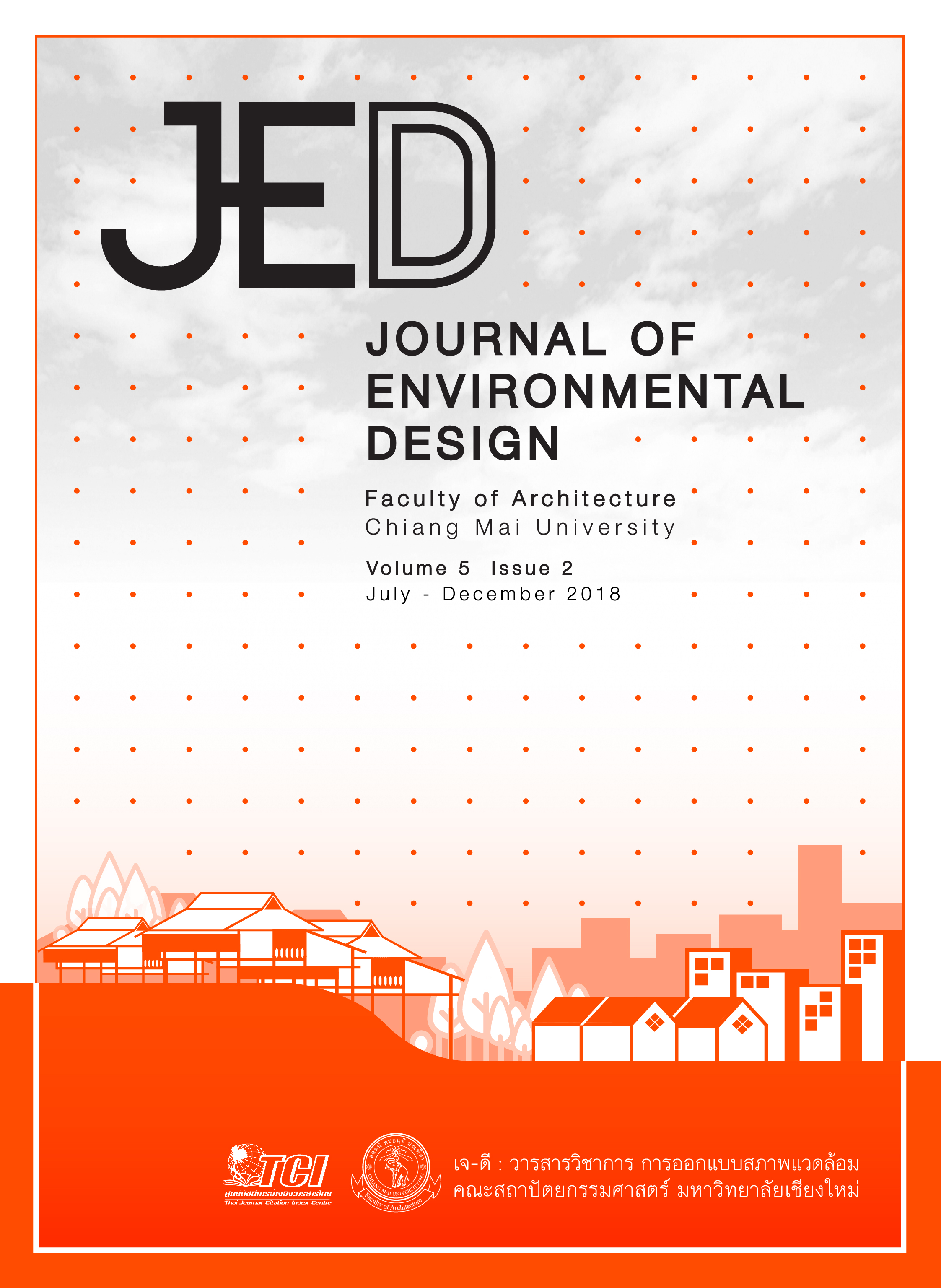Adaptive re - use of vernacular houses for tourism in Wat Ket Community, Chiang Mai
Keywords:
adaptive re-use, process, vernacular house, Wat Ket Community, tourismAbstract
This article explores the adaptive re-use of buildings by comprehending the use of vernacular houses, the processes and the factors affecting such adaptations in Wat Ket Community. The study focuses on vernacular residential buildings including shophouses that are made of wood, or, wood and cement where adaptations were made for tourism
purposes. The research method includes compilation of information, site inspection, and in-depth interview with 21 volunteering participating projects (out of the total participants of 25). The data gathered is then analyzed and compared to standard principles, to identify the strengths and weaknesses of the adaptive re-use process conducted in Wat Ket Community in order to improve efficiency of the said process and to explore possible implementation of the process to other communities with similar context. The study reveals that the adaptive re-use process of vernacular houses in Wat Ket Community almost always occurred independent of relevant guidelines and relied heavily on the developer’s perspective on each building value and significance. The key factors of adaptive re-use process are the physical condition and limitation of the building itself, the awareness of the building’s value and significance of the operator which is related to the title ownership of the land, and, unity of the community. In conclusion, the author makes suggestion in the following aspects; 1) Policy aspect: the government should disseminate knowledge and give collaboration to community to perform an adaptive re-use and establish a comprehensive development plan that includes the community in the making; 2) Community aspect: the community should maintain their strength and unity, and encourage cooperation among members and; 3) Educational aspect: the knowledge of local craftsmen and modern buildings should be studied and carried forward.
References
ICOMOS, A. (2013). The Burra Charter: the Australia ICOMOS charter for places of cultural significance. Sydney: ICOMOS.
Khanjanusthiti, P. (2009). Karn anurak sathapattayakam lae chumchom. (In Thai) [Architectural heritage and community conservation]. Bangkok: Chulalongkorn University Printing House.
Latham, D. (2000). Creative re-use of buildings. Shaftesbury: Donhead.
Orbasli, A. (2008). Architectural conservation: principles and practice. West Sussex: Blackwell.
Ongsakun, S. (2003). Rai ngan wijai chabab sombun khrongkan wijai prawattisat chumchon nai Chiang Mai: Karn sang prawattisat thongthin. (In Thai) [Complete research, Chiang Mai community history research project: the establishment of local history]. Chiang Mai: The Thailand Research Fund.
Siriwetchapun, S. (2010). Wikhro sathapattayakam Lanna (In Thai) [Analysis of Lanna Architecture]. In Dhamkeaw, S. (Eds.). Phumpanya chaoban su ngan sathapattayakam phuen thin (In Thai) [Folk wisdom to vernacular architecture]. (pp.59 - 74). Bangkok: The Association of Siamese Architects.
Tansukanun, P. & Daungthima, W. (2013). Naewtang karn pattana kwam pen an lak miti khong mueang Chiang Mai. (In Thai) [Guidelines for the diversity improvement of the city of Chiang Mai]. Chiang Mai: Pu Pae Publishing.
The heritage council of NSW. (2008). New Uses for heritage places: guidelines for the adaptation of historic buildings and sites. Retrieved from Australia.
Weeks, K. D. & Grimmer, A. E. (1995). The secretary of the interior’s standards for the treatment of historic properties: with guidelines for preserving, rehabilitation, restoring & reconstructing historic buildings. Pennsylvania: Diane Publishing.




